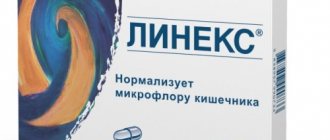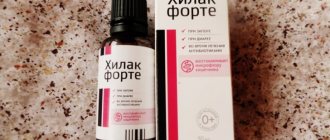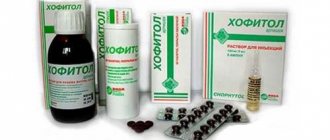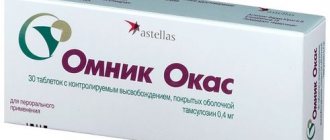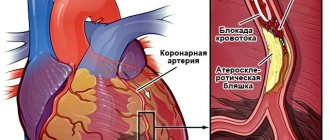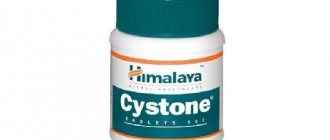Modern medicine provides many medicines to combat pain, one of which is Spazgan. It is a combination drug that contains three main components - pitofenone, metamizole sodium and fenpiverinium bromide, which have a long-lasting and rapid effect, while simultaneously relieving spasms and reducing pain.
Spazgan - composition
India is the developer of the drug Spazgan, but today many pharmacological enterprises around the world produce this drug. Basically, both tablets and Spazgan injections have identical composition:
- Metamizole sodium (0.5 g) relieves pain, which is the main indication for which Spazgan helps.
- Pitophenone hydrochloride (2 mg) is a myotropic antispasmodic agent that dilates blood vessels, relieves spasms, relaxing muscles and reducing tone.
- Anticholinergic blocker - fenpiverinium bromide, has a slight depressant effect on the nervous system, relieving spasms, colic, limiting the functioning of the glands and excretory systems.
However, the main analgesic component of this antispasmodic is sodium metamizole, the same Analgin is prohibited in some countries. Therefore, Indian pharmacologists have released a safer version of this medicine - Spazgan neo, in which Analgin is replaced with Ibuprofen. All other components of the updated version of the drug remained unchanged.
Spazgan tablets
In addition to the active substances, the tableted Spazgan composition has a more extensive composition due to excipients, the role of which in oral preparations is very important:
- The tablet is given the required mass, giving the drug the necessary technological qualities.
- Ensure dosage accuracy.
- Provide tablet strength.
- Monitor the intensity of drug dissolution.
- Increases shelf life.
- Strengthen the active substance.
The following excipients are used in the production of Spazgan tablets:
- corn starch (88 mg);
- microcrystalline cellulose (86 mg);
- sodium carboxymethyl starch (15 mg)
- povidone (11 mg);
- alginic acid (10 mg);
- aerosil (7 mg);
- magnesium stearate (5 mg);
- talc (5 mg);
- croscarmellose sodium (4.5 mg);
- sodium dodecyl sulfate (2.5 mg);
- disodium edetate (0.5 mg).
Spazgan – ampoules
Pharmacology, in addition to the tablet form, also produces Spazgan injections. Intravenous and intramuscular injections are available in ampoules and are a clear yellowish or colorless solution. The composition of this form of antispasmodic is identical to the tablets, with the only difference being that only water is present among the auxiliary components:
- water -1 ml;
- Analgin – 0.5 g;
- fenpiverinium bromine - 0.02 mg;
- pitofenone hydrochloride - 2 mg.
Organs affected by the toxin
The combined use of pharmacological agents and alcohol has a toxic effect on the internal organs and environments of the body. Alcohol, entering into a chemical reaction with a medicine, leads to poisoning, disrupts physiological processes, enhances or weakens the healing properties of drugs.
We suggest you read: Why do my legs hurt after drinking alcohol? Consequences of excessive alcohol consumption
The liver suffers more than other organs. She gets hit twice. Many medications have a side effect - hepatotoxicity, destroy cells, and disrupt the physiology of the organ. In the liver, alcohol breaks down to ethanal, a substance 20-30 times more toxic than ethanol, which causes the death of hepatocytes.
Dangerous groups of drugs for the organ in combination with alcohol:
- Anti-inflammatory;
- Hormonal;
- Antibacterial;
- Antifungal;
- Glucose control agents for diabetes mellitus;
- Antituberculosis;
- Cytostatics (chemotherapy drugs);
- Tranquilizers (anti-epileptic, psychotropic).
In second place among the internal organs exposed to the harmful effects of alcohol together with medications are the heart and vascular system. Strong drinks during drug therapy constrict blood vessels and increase blood pressure. The simultaneous intake of alcohol and chemical substances leads to failure of the myocardium and increases the risk of developing an attack of angina pectoris and a heart attack.
A mixture of ethanol and pharmaceuticals disrupts the quality of the blood and reduces clotting. This is dangerous due to internal bleeding and strokes.
Spazgan - indications for use
Spazgan is positioned as an antispasmodic drug with a pronounced analgesic effect. The main clinical manifestations for which Spazgan tablets can be prescribed by a doctor include:
- pain of various origins;
- vascular spasms;
- spasms of smooth muscles.
However, it is worth correctly placing emphasis on in what cases and what Spazgan tablets help with, and when it is necessary to use injections. The tablet form of the drug is indicated for the following ailments:
- cholelithiasis;
- menstrual pain;
- gastrointestinal colic;
- cephalalgia and migraines;
- cold.
Spazgan solution is effective for pain symptoms such as:
- muscle pain;
- lumbar pain syndrome;
- muscle inflammation;
- neuralgia;
- arthralgia;
- diseases of the biliary tract.
Spazgan for headaches
Cephalgia is a common diagnosis that Spazgan tablets help with. By cephalgic syndrome we mean nothing more than a common headache. Pulsating tension in the temples, nausea, photophobia, aversion to sounds and smells - many are familiar with a migraine attack firsthand. And if such a painful manifestation is not stopped in time, then it will be very difficult to curb the unfolding “sore”. The drug Spazgan helps perfectly with headaches, and can even cope with migraines if taken on time
Spazgan for toothache
Toothache is one of the most severe and painful, so those who often encounter this phenomenon keep a strong painkiller in their medicine cabinet. Spazgan helps well against toothache due to its impressive analgesic content. However, the main focus of this drug is spastic pain syndrome. As a last resort, you can take this remedy for pulpitis, but it is best to give preference to those drugs prescribed by dentists:
- Nimesil;
- Ketanov;
- Nise;
- Ketotifen;
- Ketonal;
- Nurofen;
- Ketorol.
Spazgan during menstruation
Dysmenorrhea is not a pathology and occurs in girls in the first 3 years after the onset of menstruation. However, with severe persistent pain and intense bleeding, gynecological disorders and diseases can be assumed, such as:
- bend of the uterus;
- hormonal disbalance;
- spontaneous miscarriage;
- cystic formations;
- inflammation;
- endometritis.
Menstrual pain syndrome is divided into two types:
- Adrenergic dysmenorrhea is characterized by increased levels of adrenaline and dopamine. As a result, hormonal changes occur, expressed by tachycardia, migraines, constipation and vascular spasms. This is exactly the case for which Spazgan helps best as an antispasmodic.
- Parasympathetic dysmenorrhea has other symptoms:
- swelling;
- weight gain;
- decreased heart rate;
- diarrhea.
Dysmenorrhea in both cases is not dangerous. However, you should immediately consult a doctor when:
- A strong analgesic and antispasmodic, Spazgan does not have an analgesic effect.
- Bleeding profusely with clots.
- The pain intensifies.
- Nausea, vomiting, and loss of consciousness are observed.
The most dangerous combinations and consequences
The compatibility of an antispasmodic with alcohol is especially dangerous for people suffering from diseases of the cardiovascular system and chronic pathologies of the respiratory system.
About half of the complications are due to a hypertensive crisis; the amount of drink consumed may be minimal. Under the influence of Spasmalgon, the muscle walls of blood vessels relax, lowering the pressure in the bloodstream.
We suggest you read: How you can cause an aversion to alcohol
The skin and mucous membranes are hyperemic, cold sweat and chills occur. Loss of consciousness and cerebral hemorrhages are possible.
Allergic response
The body responds to the double blow with a hypersensitive immune response. The most dangerous form is Quincke's edema. It develops quickly, without itching or discomfort.
Swelling of the face increases, especially in the area of the eyelids and lips, neck, and mucous membranes of the larynx. The reaction is dangerous due to its rapid progression, development of bronchospasm and suffocation.
In both cases, immediate medical attention is required. Other consequences of joint use with alcoholic beverages are less dangerous, but unpleasant: urticaria, skin itching, allergic diarrhea.
If, in the case of a course of treatment, you need to calculate how long after you can drink an alcoholic drink, you need to refer to the instructions.
The drug reaches its maximum effect 1.5 - 2 hours after administration, and the elimination period is 6 - 12 hours, depending on the organism. You can plan a party no earlier than 12 – 15 hours after treatment.
The combination of alcohol and chemical-based drugs leads to serious disorders in the body, and sometimes to fatal consequences.
| Name of group, drug | Negative results of interaction |
| Neuroleptics (tranquilizers, anticonvulsants, hypnotics) | Severe intoxication, up to cerebral coma |
| CNS stimulants (Theophedrine, Ephedrine, Caffeine) | Rapid increase in blood pressure, hypertensive crisis |
| Antihypertensives (Captofrin, Enalapril, Enap-N), diuretics (Indapamide, Furosemide) | Sudden drop in pressure, collapse |
| Analgesics, anti-inflammatory | Increased toxic substances in the blood, general poisoning of the body |
| Acetylsalicylic acid (Aspirin) | Acute gastritis, perforation of gastric ulcer and 12-PC |
| Paracetamol | Toxic liver damage |
| Hypoglycemic (Glibenclamide, Glipizide, Metformin, Phenformin), insulin | A sharp decrease in blood sugar levels, hypoglycemic coma |
Share with friends or Save for yourself!
Spazgan - side effects
Like any other medication, Spazgan has side effects. Therefore, before you start taking this drug, you need to consult with your doctor to find out what Spazgan helps with, whether it is indicated in a particular case and what side effects may accompany its use. After using Spazgan, you need to listen to your body; if your condition worsens, then it is better to abandon this drug, because it can contribute to the development of diseases such as:
- gastritis and ulcers of the stomach and gastrointestinal tract;
- hypotension;
- indigestion;
- anuria;
- constipation;
- vertigo;
- allergy;
- tachycardia;
- interstitial nephritis;
- liver and kidney pathologies;
- cardiac disorders;
- decreased vision.
Drug interactions
- with barbiturates, phenylbutazone and other inducers of hepatic microsomal enzymes, the effect of metamizole is weakened;
- with Cyclosporine - the level of the latter in the bloodstream decreases;
- combination with other non-narcotic analgesics causes mutual enhancement of toxic effects;
- with sedatives and tranquilizers, the analgesic effect of Spazgan is potentiated;
- with tricyclic antidepressants, oral contraceptives, Allopurinol, metabolism in the liver is disrupted and the toxicity of metamizole increases.
Spazgan - contraindications
Taking any drug raises many questions regarding contraindications. For what diseases can the use of this drug be limited or canceled? Is Spazgan allowed during pregnancy? Can children drink Spazgan? The instructions for medications provide comprehensive information on this matter:
It is prohibited to take Spazgan for the following diagnoses:
- severe pathologies of the liver and kidneys;
- peptic ulcer of the stomach and gastrointestinal tract;
- intestinal obstruction;
- violation of bone marrow hematopoiesis;
- cardiac disorders;
- glaucoma;
- prostate hyperplasia;
- collapse;
- megacolon;
- G-6-PD erythropathy;
- individual intolerance to the components of the drug.
Spazgan should not be used during pregnancy and breastfeeding. It is especially dangerous to take this drug in the first and last trimester of pregnancy. Children under 5 years old should also not be given Spazgan tablets. Intravenous injections are limited only to infants under three months of age or with a body weight below 5 kg.
Caution when using Spazgan is necessary for those whose medical history includes:
- bronchial asthma;
- hypotension;
- allergies of various types;
- intolerance to NSAIDs.
special instructions
If treatment with the drug lasts more than a week, monitoring of the peripheral blood picture and general condition of the liver is necessary. If agranulocytosis or thrombocytopenia is suspected, the drug should be discontinued. In case of acute abdominal pain, it is unacceptable to stop the attack until the cause of the disease is determined.
The risk of developing anaphylactic shock after intravenous administration is higher than after oral administration. Against the background of atopic bronchial asthma and hay fever, the risk of developing allergic reactions is higher. Intravenous and intramuscular administration is indicated only if taking pills is impossible for some reason or absorption from the gastrointestinal tract is impaired.
The injection is given slowly, the patient should be in a supine position, and his pulse, blood pressure and respiratory rate should be monitored. A long needle is used for injections. When administering more than 2 ml of solution, special care must be taken due to the risk of a sharp decrease in blood pressure.
Treatment of children under 5 years of age and patients taking cytostatics is carried out only under the supervision of a physician. Due to the release of a metabolite, urine may turn red, which has no clinical significance. It is not recommended to take ethanol during treatment. You should also be careful when driving vehicles.
Spazgan - application
During treatment with the antispasmodic Spazgan, dosage and compliance with the rules of safe administration are extremely important:
1. You cannot combine the use of medication with alcohol.
2. The maximum dose of the drug must not be exceeded. In case of an overdose of Spazgan, the following manifestations may occur:
- convulsions;
- drowsiness;
- hypotension;
- sweating;
- dry mouth;
- nausea and vomiting;
- visual impairment;
- confusion.
Spazgan tablets – dosage
If the choice fell on Spazgan tablets to relieve pain and spasms, the use and dosage of the drug must be strictly observed, because exceeding the dose of the drug can negatively affect the general condition of the patient:
- Take the tablets after meals with a sufficient amount of water.
- For adults and adolescent children over 15 years of age, the daily dose is limited to 1-2 tablets no more than three times a day.
- Children aged 12-14 years are limited to 6 tablets per day, that is, 1-1.5 tablets no more than four times a day.
- Children 12-8 years old are allowed to take ½ tablet, but not exceeding the daily requirement of 4 tablets.
- Children 5-7 years old can take no more than 2 tablets per day, dividing them into 4 doses.
Spazgan in ampoules – dosage
Spazgan injections for headaches and other types of algia are used both for intramuscular and intravenous administration. Before use, the liquid must be slightly warmed to 36°C. You should not give Spazgan injections for more than three days in a row. The dosage of the drug should be calculated as follows:
- The adult dose of intravenous administration does not exceed 4 ml per day. 1-2 ml at a time and repeat if necessary after 6-8 hours. The drug must be administered very slowly.
- Spazgan can be taken intramuscularly 2-3 times a day, 2-5 ml of solution with a maximum daily dose of 10 ml.
- Children's dosage is calculated according to the child's age and weight:
- 3-11 months – IM up to 0.2 ml;
- 12 months - 1 year - IV up to 0.2 ml, and IM up to 0.3 ml;
- 3-4 years – IV up to 0.3 ml, and IM up to 0.4 ml;
- 5-7 years – IV up to 0.4 ml, and IM up to 0.5 ml;
- 8-12 years – IV up to 0.6 ml, and IM up to 0.5 ml;
- 12-15 years – IV and IM up to 1 ml.
How long can you take Spazgan?
The duration of the course of taking an antispasmodic may vary depending on the symptoms, the severity of the clinical picture and the mechanisms of the occurrence and development of the pathology. However, we must not forget about the existing side effects of the drug and negative manifestations in case of overdose. Therefore, Spazgan can be taken for no longer than 5 days.
Compatibility of Spazmalgon and alcohol - possible consequences
Signs of poisoning
The combined use of Spazmalgon and alcohol is extremely undesirable. The instructions for this drug strictly prohibit this. Such compatibility can lead to extremely undesirable consequences. Most likely, the person faces severe alcohol poisoning.
Some indicate that such compatibility is possible, and the negative consequences of this are slightly exaggerated. Alcohol and Spazmalgon cannot be taken together, and the result of such an experiment depends on the individual characteristics of the individual patient’s body.
Very often, after simultaneous use of this drug with ethyl alcohol, severe nausea and vomiting develop. The person feels unwell and coordination of movements is impaired. The greater the dose of alcohol consumed, the more unpleasant symptoms will be observed subsequently. All side effects of such compatibility can appear either immediately or after some time, which is the main risk.
Alcohol and Spasmalgon are especially dangerous for people suffering from chronic diseases of the cardiovascular system. Frequent combination of these drugs produces an extremely negative effect on the liver.
Why is it dangerous to combine alcohol and Spazmalgon? Their simultaneous use is fraught with serious consequences for the human body.
If you combine alcohol and Spazmalgon tablets, the risk of developing an allergic response increases. After drinking ethyl alcohol, urticaria, bronchospasm, or anaphylactic shock may develop. Such negative reactions of the body are fraught with serious consequences. Without proper assistance, a person may die.
If you combine the use of these drugs, a sharp jump in blood pressure may occur. This is accompanied by the development of tachycardia (an increase in the number of heart contractions).
One of the negative consequences of combining analgesics and alcohol is a decrease in the effectiveness of the drug used. Despite the fact that the person has taken a sufficient dose of the medicine, he does not experience relief. Sometimes the patient tries to take even more pills, which can lead to drug poisoning, which is life-threatening.
Severity of drug poisoning
The compatibility of alcohol with an analgesic is zero. Therefore, after taking them simultaneously, the risk of developing some side effects of Spazmalgon increases:
- dry mouth;
- exacerbation of signs of stomach and duodenal ulcers;
- heart rhythm disturbance;
- visual impairment;
- dizziness;
- anemia and other negative changes in blood composition;
- red coloring of urine;
- oliguria, anuria, proteinuria;
- renal failure;
- decreased sweating;
- hepatitis.
The combined use of the drug and alcohol leads to disruption of the digestive process
The combined use of Spazmalgon and alcohol often leads to severe alcohol poisoning. The person experiences signs of digestive disturbances and cannot move or speak normally. When consuming large doses of alcohol, loss of consciousness or the development of a coma may occur.
The compatibility of alcohol and medications with antispasmodic and analgesic effects is questionable. Therefore, before taking medications, you should avoid any alcoholic beverages. Abstinence from alcohol will have a positive effect on the patient’s well-being and health, since it is a common cause of the development of many ailments.
The accompanying instructions for the drug prohibit its combination with alcoholic beverages of any strength. Both substances have largely the same effect on the same organs and systems.
Alcohol in the body:
- Plays the role of an irritant of the mucous membrane of the digestive tract. The liver, the main disposer of toxic substances, begins to work in enhanced mode. The pancreas slows down the production of insulin.
- It has a dilating effect on the circulatory system, then a sharp spasm of blood vessels occurs.
- Increases the load on the kidneys as ethanol accelerates fluid excretion.
It is recommended to take the drug after meals; it has an aggressive effect on the mucous membrane of the digestive tract. Acting as an antispasmodic, it relaxes the wall of blood vessels, dilating them. A double effect occurs, which is bad for health.
Spazgan - analogues
It cannot be said that Spazgan is expensive, but on the pharmaceutical market there are many analogues of this drug with the same composition, with the same effect, but at a lower cost. Since the composition of all remedies is almost identical, the list of symptoms that the Spazgana analogue helps with will be the same: pain, spasms.
Such an abundance of drugs often raises a lot of questions, for example, Spazgan or Spazmalgon, which is better and how do these drugs differ in general? In general, Spazmalgon is a Bulgarian double of the Indian original. They have the same composition and even the instructions are written as if they were carbon copies. And this is not the only identical analogue of the popular antispasmodic. In any pharmacy you can easily find a whole list of the same medications at very different prices:
- Revalgin;
- Baralgin;
- Took;
- Spasmalin;
- Maxigan.
Rules for taking medications and alcohol
Is it possible to use Spazmalgon and alcohol one-time if it is a necessary measure? The compatibility of these products is zero, so it is better not to experiment with this because of the unpredictability of the consequences for the body.
While taking the drug, you should avoid drinking alcohol.
After using Spazmalgon, at least two hours should pass, after which you can take small doses of alcohol. But it is best to avoid strong drinks altogether.
If acute pain appears suddenly while drinking alcohol, you must wait the same 2-3 hours, after which you are allowed to take an antispasmodic tablet. When the discomfort intensifies, you can use another medicine that is compatible with alcohol. If a person's condition worsens significantly, an ambulance should be called. Doctors should be warned about alcohol intoxication so that they give the patient drugs that are compatible with ethyl alcohol.
In this case, it is prohibited to consume not only strong alcohol, but also wine, beer, liqueurs, and light cocktails.
Drinking alcohol during treatment minimizes the clinical effect of therapy and creates a risk of developing complications of the disease.
If this cannot be avoided, follow the rules of behavior that will reduce the consequences:
- Do not drink strong drinks (vodka, cognac, whiskey), choose dry wine (100-150 ml), beer (no more than 300 ml). Don't drink alcohol on an empty stomach.
- The interval between taking the medicine and alcohol should be at least 2 hours.
- To reduce the toxic effect, take medications that protect the liver (hepatoprotectors), pancreas (pancreatin), and stomach (antacids ─ Rennie, Almagel).
If a person takes antiviral medications for colds, anti-inflammatory drugs, alcohol in moderation does not pose a threat to the body.
Alcoholic drinks during treatment are contraindicated in cases of liver cirrhosis, severe infectious diseases, and during a course of chemotherapy.
Effects on the cardiovascular system
Like other organs, blood vessels also have a layer of smooth muscle cells. The main property of the smooth muscles of the cardiovascular system is its ability to contract. Due to the rhythmic narrowing and expansion of the lumens of blood vessels, blood circulation occurs. The more relaxed the walls of blood vessels, the less effort the heart muscle needs to fill them with blood, and the lower the pressure. If the medicine relieves tension in the smooth muscle layer, then at the same time the walls of the blood arteries relax.
Therefore, hypotensive patients need to be especially careful with the use of such medications, as they can cause a drop in already low blood pressure. But for people who more often experience hypertension, the use of this drug will be more appropriate.
Attention! In a person who does not suffer from or is not prone to hypertension, an uncharacteristic increase in blood pressure can be triggered by painful internal spasms. In this case, taking Spazgan, in addition to its primary antispasmodic and analgesic effect, also has a hypotonic effect.
Some doctors recommend taking an antispasmodic in cases where a sudden jump in blood pressure occurs due to spasms, and there is no opportunity to obtain antihypertensive medications, and there is a high probability of a hypertensive crisis. That is, Spazgan can be used under pressure because of its relaxing effect on the walls of blood vessels. Such use of a substance is permissible in extreme cases, therefore, it is first necessary to assess the appropriateness of the action, find out the diseases characteristic of humans, and compare their presence with the list of contraindications in the instructions.
Does it increase or decrease blood pressure?
The movement of blood in the body occurs due to the rhythmic narrowing and expansion of the lumens in the vessels. But the more tense the vascular walls are, the more effort the heart muscle needs to put in to fill them with blood fluid. Therefore, blood pressure will be higher. “Spazgan” relaxes smooth muscle tissue and the walls of arteries, as a result of which the pressure gradually decreases. This will prove useful in high blood pressure and undesirable hypotension patients.
It is important to take Spazgan for high blood pressure if its surges are provoked by painful spasms. The drug will not only have an analgesic and antispasmodic effect, but will also exhibit a pronounced hypotensive effect.
How do they work?
Metamizole (the main component of the widely known Analgin) is a 5-pyrazolone derivative that simultaneously has:
- analgesic,
- antipyretic,
- antispasmodic effect.
Since this substance was introduced into therapeutic practice back in 1922, it has gained widespread recognition. The analgesic effectiveness of metamizole has been shown in many cases, including post-operative pain, dental pain and headaches.
Metamizole is a highly hydrophilic compound, therefore it is able to quickly exhibit its analgesic effect (from 20 to 45 minutes after administration). The mechanism of action of this substance includes two pathways - peripheral and central. Metamizole makes nociceptors (pain receptors) in the periphery insensitive and activates enkephalin-producing cells in the part of the brain responsible for transmitting pain signals.
Most often, it is spasm, and not direct tissue damage, that causes pain. Fenpiverinium bromide and pitofenone have a relaxing effect on the smooth muscles of the body, which helps get rid of spasm, and therefore the cause of pain.
Main differences
Spazgan is produced by an Indian company. And spasmalgon in Bulgaria.
Spasmalgon has a weak effect. Spazgan acts more intensely.
Spasmalgon contains fewer excipients. Most of the components are found in spazgan. Thanks to these substances, the effect is enhanced.
These drugs are analogues. The more additives or excipients, the greater the risk of an adverse reaction.
Additives negatively affect the gastrointestinal tract.
Hypotensive reaction of the body
For people suffering from various hypertensive manifestations in the form of high surges or a large gap between systolic and diastolic levels, it is necessary to take into account the hypotensive properties.
If your doctor prescribes taking Spazgan in tablets, if this is the first use of the drug and the reaction to its active ingredients is unknown, then it would be advisable to start with a minimum dose. The patient should be warned that if he is prone to hypertension, he needs to monitor, in addition to allergic reactions, possible manifestations of changes in his condition.
Typical signals for reconsidering the appointment:
- the appearance of tachycardia;
- change in heart rate;
- a decrease in pressure to a level below normal;
- the occurrence of unusual weakness and fatigue;
- manifestation of cyanosis on the skin or mucous membranes due to lack of oxygen in the blood.
The decision about whether to take the next pill should be made taking into account how you feel. If the pain has passed, the spasms have decreased, and the heart function remains normal, this means that the medicine can be used in the future.
Overdose
Symptoms of a drug overdose may occur when the recommended dose is exceeded or the medication is taken for a long time. The following symptoms are considered characteristic signs of contraindications:
- nausea, vomiting;
- sharp abdominal pain;
- convulsions;
- bowel dysfunction;
- fainting state.
The appearance of such symptoms requires taking a sorbent and gastric lavage. If the patient's condition is serious, an ambulance should be called.
In case of an overdose of the drug, the following symptoms may be observed: vomiting, a feeling of dry mouth, changes in sweating, impaired accommodation, decreased blood pressure, drowsiness, confusion, impaired liver and kidney function, convulsions.
Treatment: gastric lavage, administration of activated carbon, symptomatic therapy.
In case of drug overdose
There are signs of metamizole intoxication in combination with anticholinergic manifestations. The most common are toxic-allergic syndrome and vascular shock; signs of agranulocytosis, brain damage and gastrointestinal disorders are somewhat less common.
Symptoms: painful acute attacks in the abdomen, vomiting, drowsiness, confusion, persistent decrease in blood pressure, difficult to correct, signs of severe allergic reactions up to anaphylactic shock, impaired functional state of the liver, kidneys, convulsive manifestations.
Treatment: discontinuation of the drug, gastric lavage, taking sorbents, using forced diuresis and hemodialysis. Symptomatic therapy. There is no specific antidote.




